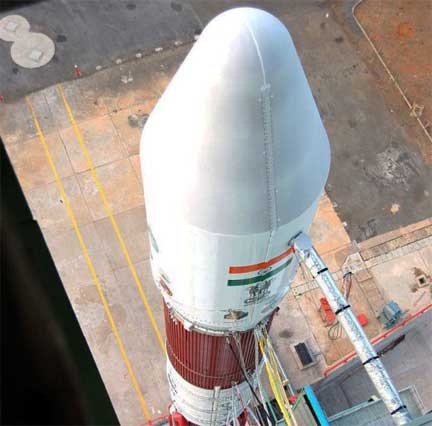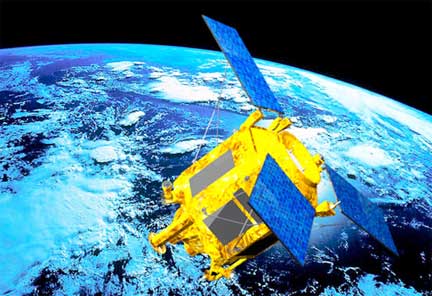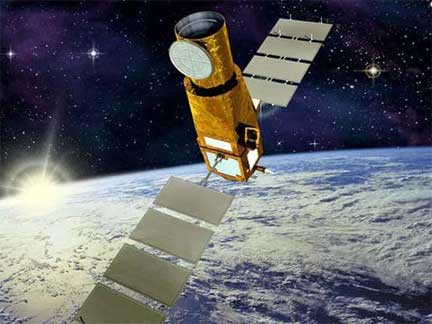
The ISRO's PSLV-C21 launch vehicle. Photo courtesy of ISRO.
...by the end of this year, said a senior official in Chennai. “We will be launching Spot-6, a French satellite, and a small Japanese satellite on board PSLV-C21 (Polar Satellite Launch Vehicle) rocket, next month,” P.S. Veeraraghavan, Director, Vikram Sarabhai Space Centre (VSSC). This according to a news story carried in The Hindu. The third is a communication satellite—GSAT-10—on-board Ariane rocket from Kourou in French Guiana.

Artistic rendition of the SPOT-6 satellite.
ISRO’s commercial arm Antrix Corporation Limited (Antrix) has entered into a commercial Launch Services Agreement with Astrium SAS, a company under EADS, France, for launching SPOT-6, an advanced remote sensing satellite. The 800kg SPOT-6, built by Astrium SAS, will be the heaviest third party payload that ISRO will be carrying after the 350kg Italian satellite Agile was placed into orbit in 2007. As the total luggage will be around 815kg, ISRO will be using its Core Alone variant of PSLV (rocket without its six straps on motors). This mission will move ISRO’s total tally to 29 foreign satellite launches.

Artist concept illustration of the GSAT-10 satellite.
The ISRO is also planning to launch GSAT-14, a small communication satellite that is considered as the replacement for India’s the education satellite Edusat, by this December or January next year using the heavier rocket Geosynchronous Satellite Launch Vehicle (GSLV). The spacecraft will carry Ka-band beacons, which are planned to be used to carry out studies related to rain and atmospheric effects on Ka-band satellite communication links in Indian region.
ISRO will be flying the GSLV rocket this time with its own cryogenic engine. This will be the second GSLV rocket to fly with the indigenous cryogenic engine. The first GSLV rocket that flew with indigenous cryogenic engine in 2010 was a failure. Mr. Veeraraghavan said ISRO will be testing its GSLV Mark III model next March, but without the cryogenic engine.


